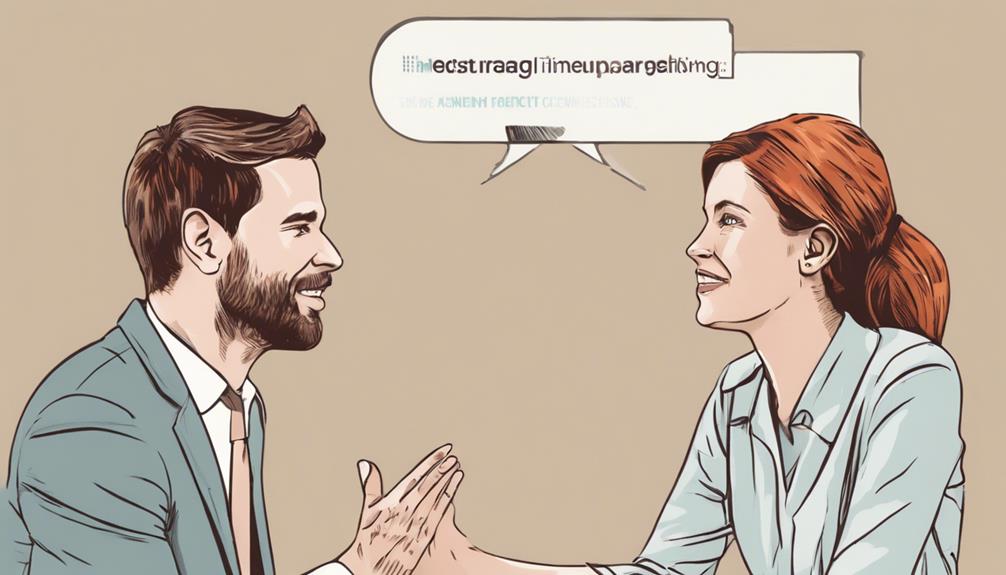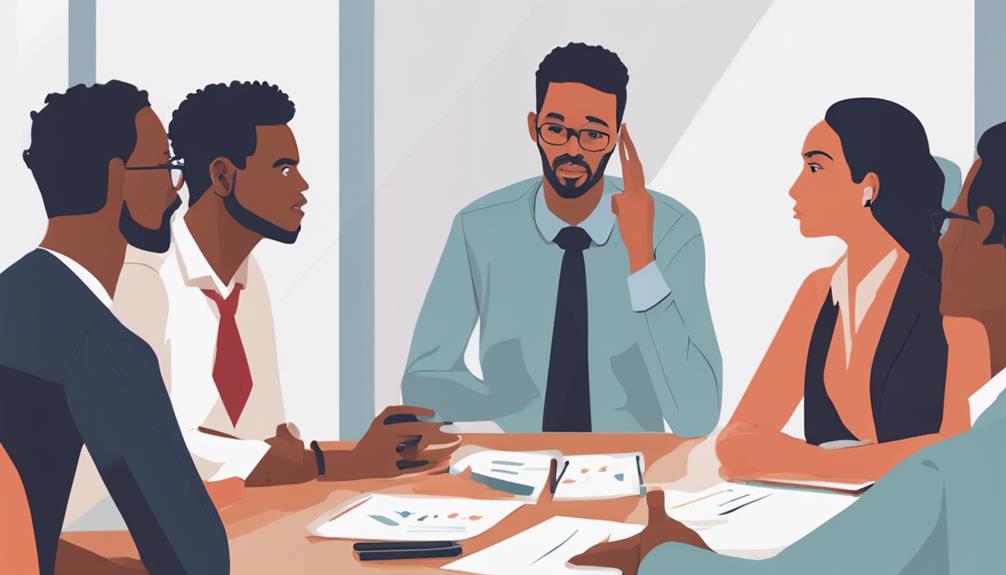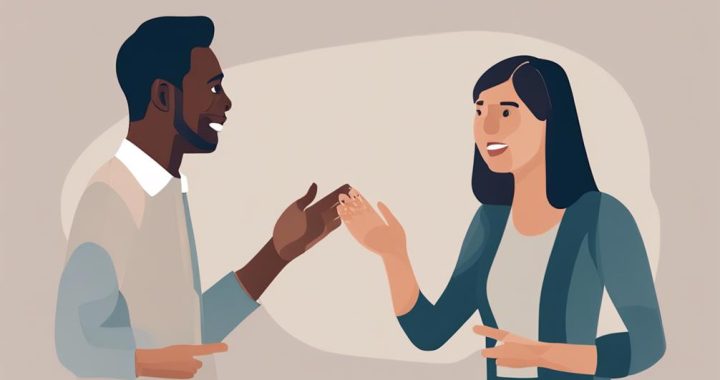Enhance your communication skills by mastering active listening, body language, and assertiveness techniques. Practice active listening through reflective listening and feedback gestures like nodding. Pay attention to body language cues such as eye contact and posture to convey interest and confidence. Develop assertiveness skills to express thoughts respectfully and set boundaries. These techniques are key to improving your communication in both personal and professional settings. Are you ready to unlock the secrets to effective communication?
Active Listening Techniques

Enhance your communication skills by practicing active listening techniques regularly. Reflective listening is a powerful tool that involves paraphrasing and summarizing what the speaker has said to demonstrate understanding.
By using feedback techniques such as nodding, maintaining eye contact, and providing verbal cues like 'I see' or 'Go on,' you can show the speaker that you're actively engaged in the conversation.
Empathetic responses play a crucial role in active listening. Show empathy by acknowledging the speaker's feelings and experiences. Use questioning strategies to delve deeper into the speaker's thoughts and emotions.
Open-ended questions like 'Can you tell me more about that?' encourage the speaker to elaborate and express themselves more fully.
Body Language Mastery
Practice observing and interpreting body language cues to master the art of nonverbal communication in your interactions. When engaging with others, pay attention to their eye contact and posture cues.
Eye contact is a powerful tool that conveys interest and attentiveness. Maintaining appropriate eye contact shows respect and openness in conversations. It signifies that you're fully engaged and interested in what the other person is saying. On the other hand, avoiding eye contact can be perceived as disinterest or even dishonesty.
Posture cues also play a significant role in nonverbal communication. A relaxed and open posture can indicate approachability and confidence. Standing or sitting up straight portrays attentiveness and shows that you're ready to engage. Conversely, slouching or crossing your arms might signal defensiveness or disengagement.
Assertiveness Training

To effectively assert yourself in various situations, it's important to understand and practice assertiveness training techniques. Assertiveness training focuses on developing the confidence to express your thoughts, feelings, and needs in a respectful yet firm manner. By mastering assertiveness, you can enhance your communication skills significantly.
One key aspect of assertiveness training is confidence building. This involves recognizing your self-worth and believing in the validity of your opinions and emotions. Cultivating self-confidence is crucial for asserting yourself effectively in interactions with others. It can help you convey your message clearly and assertively without coming across as aggressive or passive.
Effective communication lies at the core of assertiveness training. Learning how to communicate assertively involves expressing yourself honestly, setting boundaries, and actively listening to others. By honing these skills, you can navigate conversations with confidence and clarity, fostering mutual understanding and respect in your interactions.
Incorporating assertiveness training into your communication toolkit can empower you to engage more authentically and assertively in various personal and professional settings.
Conclusion
So, now you have learned about the 3 best techniques for enhancing your communication skills.
Remember to practice active listening, master body language, and undergo assertiveness training to improve your ability to connect and communicate effectively with others.
By incorporating these techniques into your daily interactions, you'll see a noticeable difference in how you communicate and connect with those around you.
Keep practicing and don't be afraid to step out of your comfort zone. Good luck!
